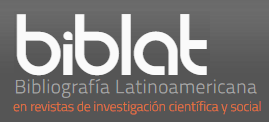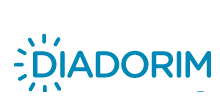Las estrategias de hedging: un estudio comparativo entre el Portugués Brasileño y el Inglés
DOI:
https://doi.org/10.5433/1519-5392.2018v18n2p5Palabras clave:
Hedges, Escritura académica, Linguística de corpus, TransferenciaResumen
Este estudio tiene como objetivo describir el uso de hedging en artículos científicos escritos por los brasileños en portugués y en Inglés y artículos escritos por hablantes nativos de inglés americano y las posibles transferencias de lenguaje de su lengua materna. Después de un estudio teórico sobre la escritura académica y una breve explicación acerca del género artículo científico, abordamos las definiciones de hedges, así como sus usos y funciones en el texto académico. A continuación, describimos la metodología basada en los principios de la Lingüística de Corpus. El corpus analizado consta de 30 artículos de investigación: 10 artículos escritos en portugués de Brasil, 10 artículos escritos en Inglés por hablantes nativos de portugués y 10 artículos escritos en Inglés por los nativos americanos. Para el análisis y discusión de los datos utilizamos las taxonomías de Hyland (1998, 2000). Los resultados mostraron diferencias en los corpora escritos por brasileños en comparación al corpus de inglés nativo, indicando posibles transferencias entre las lenguas. Este trabajo contribuye, por lo tanto, al área de los estudios del texto especializado, de los estudios contrastivos y de la enseñanza de lenguas con fines específicos.Descargas
Citas
ANTHONY, Laurence. AntConc (Version 3.4.3) [Computer Software]. Tokyo: Waseda University, 2014. Disponível em: http://www.laurenceanthony.net/. Acesso em: 5 abr. 2019.
BERBER-SARDINHA, Tony. Linguística de corpus. São Paulo: Manole, 2004.
BHATIA, Vijay. Applied genre analysis and ESP. In: MILLER, Tom (ed.). Functional approaches to written text: classroom applications. Washington: United States Information Agency, 1997.
BROWN, Penelope; LEVINSON, Stephen. C. Politeness: some universals in language usage. Cambridge: Cambridge University Press, 1987.
CARVALHO, Ednúsia Pinto. Marcas de atenuação retórica: um estudo contrastivo. 2011. Tese (Doutorado) - Universidade Federal do Ceará, Fortaleza, 2011.
CLYNE, Michael. The sociocultural dimension: the dilemma of the German speaking scholar. In: SCHRODER, Hartmut (ed.). Subject-oriented texts. Languages for special purposes and text theory. Berlin: De Gruyter, 1991. p. 49-68.
CONNOR, Ulla. Contrastive rhetoric: cross-cultural aspects of second language writing. New York: Cambridge University Press, 1996.
GALTUNG, Johan. Deductive thinking and political practice: an essay of the teutonic intellectual style. In: GALTUNG, Johan (ed.). Papers on methodology, essays on methodology. Copenhagen: Ejlers, 1979. v. 2.
HINKEL, Eli. Indirectness in L1 and L2 academic writing. Journal of Pragmatics, Amsterdam, v. 27, n. 3, p. 360-386, 1997.
HYLAND, Ken. Disciplinary discourses: social interactions in academic writing. London: Longman/Ann Arbor, 2000.
HYLAND, Ken. English for academic purposes: an advanced resource book. New York: Routledge, 2006.
HYLAND, Ken. Hedging in academic writing and EAP textbooks. English for Specific Purposes, New York, v. 13, n. 3, p. 239-256, 1994.
HYLAND, Ken. Hedging in scientific research articles. Amsterdam: John Benjamins Publishing Company, 1998.
HYLAND, Ken. The author in the text: hedging scientific writing. Hong Kong Papers in Linguistics and Language Teaching, Pokfulam, HK, v. 18, p. 33-42, 1995.
KADAR-FULOP, Judith. Culture, writing, and curriculum. In: PURVES, Alan C. (ed.). Writing across languages and cultures: issues in contrastive rhetoric. Newbury Park, CA: Sage Publications, 1988. p. 25-50.
KELLERMAN, Eric. The empirical evidence for the influence of the L1 in interlanguage. In: DAVIES, Alan; CRIPER, Clive; HOWATT, Anthony P. R. (ed.). Interlanguage. Edinburgh: Edinburgh University Press, 1984. p. 98-122.
KROLL, Barbara. Considerations for teaching na ESL/EFL writing course. In: CELCE-MURCIA, Marianne (ed.). Teaching English as a second/foreign language. Boston: Heinle & Heinle, 2001. p. 219-232.
LACKSTROM, John E.; SELINKER, Larry; TRIMBLE, Louis. Grammar and technical english. English Teaching Forum, Washington, v. 10, n. 5, p. 3-14, 1972.
LAKOFF, George. Hedges: a study in meaning criteria and the logic of fuzzy concepts. Journal of Philosophical Logic, Dordrecht, NL, v. 2, p. 458-508, 1973.
MARKKANEN, Raija; SCHRODER, Hartmut. Hedging and its linguistic realizations in German, english and finnish philosophical texts: a case study. Vaasa: Vaasan Korkeakoulu, 1988a.
MARKKANEN, Raija; SCHRODER, Hartmut. Hedging as a translation problem in scientific texts. In: LAUREN, Christer; NORDMAN, Marianne (ed.). Special language: from human thinking to thinking machines. Clevedon, AV: Multilingual Matters, 1988b. p. 171-180.
MCENERY, Tom; HARDIE, Andrew. Corpus linguistics: method, theory and practice. Cambridge: Cambridge University Press, 2012.
MOLSING, Karina Veronica; PERNA, Cristina Becker Lopes. The pronominal use of -se in brazilian portuguese academic writing. Unpublished Manuscript, 2014.
NEARY-SUNDQUIST, Colleen. The use of hedges in the speech of ESL learners. Elia: Estudios de Linguistica Inglesa Aplicada, Madrid, v. 13, p. 149, 2013.
ODLIN, Terence. Language transfer: cross-linguistic influence in language learning. New York: Cambridge U. P., 1989. OXFORD advanced learner's dictionary. Oxford: Oxford University Press, 2005.
PURVES, Alan C. Introduction. In: PURVES, Alan C. (ed.). Writing across languages and cultures: issues in contrastive rhetoric. Newbury Park, CA: Sage Publications, 1988. p. 9-21.
REZENDE, Patrícia Almeida; HEMAIS, Bárbara. Análise comparativa de artigos científicos da área da saúde. The ESPecialist, São Paulo, v. 25, n. 2, p. 131-152, 2004.
ROUNDS, P. Hedging in written academic discourse: precision and flexibility. Michigan: University of Michigan, 1982. Mimeo.
SHARWOOD-SMITH, Michael A. On first language loss in the second language acquirer: problems of transfer. In: GASS, Susan M.; SELINKER, Larry (ed.). Language transfer in language learning. Rowley, MA: Newbury House, 1983. p. 222-231.
SHEN, Fan. The classroom and the wider culture: identity as a key to learning English composition. College Composition and Communication, Urbana, v. 40, p. 459-66, 1988.
UYSAL, Hacer Hande. Argumentation across L1 and L2 writing: exploring cultural influences and transfer issues. VIAL: Vigo International Journal of Applied Linguistics, Vigo, GZ, n. 9, p. 133-519, 2012.
VARTALLA, Teppo. Remarks on the communicative functions of hedging in popular scientific and specialist research articles on medicine. English for Specific Purposes, New York, v. 18, n. 2, p. 177-200, 1999.
ZUCK, Joyce G.; ZUCK, Louis V. Hedging in news writing. In: CORNU, AnneMarie VANPARIJS, Johan; BATEN, Lut (ed.). Beads or bracelet? How do we approach LSP? Oxford, OX: Oxford University Press, 1987. p. 172-181.
Descargas
Publicado
Cómo citar
Número
Sección
Licencia
Derechos de autor 2018 Entretextos

Esta obra está bajo una licencia internacional Creative Commons Atribución 4.0.
Entretextos adota a Licença Creative Commons Attribution 4.0 International, portanto, os direitos autorais relativos aos artigos publicados são do/s autor/es.
Sob essa licença é possível: Compartilhar - copiar e redistribuir o material em qualquer suporte ou formato. Adaptar - remixar, transformar, e criar a partir do material, atribuindo o devido crédito e prover um link para a licença e indicar se mudanças foram feitas.
























